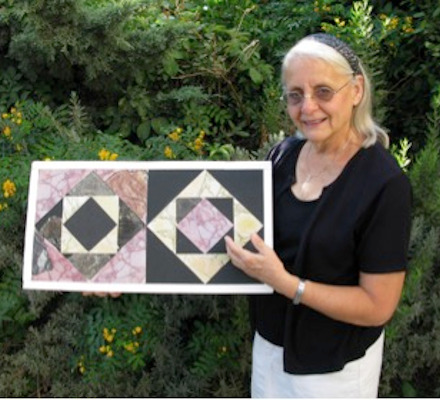Tag Archive for: pottery

Not as you thought: The most significant archaeological work is in the lab and not at the dig…
Many people ask us, what kind of processing do we do on our material before publishing - and why does it take so long? For a quick answer, take a look at the photo below - it tells us a little about the donkeywork behind the processing of artifacts.…

International Women’s Day 2018
Girl Power at the Sifting Project!
Today is International Women’s Day and I want to gloat about the amazing women working for the Temple Mount Sifting Project. We really have a special workplace because we have such a high percentage of…

Mycenaean Imports Early in Jerusalem’s History
Our "Finds from the Lab" feature from our July Newsletter. Sign up now!

Evidence of Greeks on the Temple Mount
Amphora handle from the Temple Mount dates to the reign of Antiochus Epiphanes IV, the villain of the Channukkah story.

Peretz Reuven: Islamic History Recorded
Staff Spotlight hits Peretz Reuven, expert in Early and Late Islamic Cultural Heritage
Tag Archive for: pottery

Iron Age IIA (10th Cent. BCE – 9 Cent. BCE)
One of the primary features of the First Temple Period pottery is lustrous burnishing lines adorning the surface of most tableware vessels. This practice first began in the early part of the period known as the Iron IIA (10th -9th centuries BCE), when the burnishing was applied by hand, either in horizontal lines or in a more haphazard crisscross-like pattern known as “irregular” or “wild” burnishing. Gradually, as time progressed, the burnishing was typically achieved by placing the vessel on a fast wheel thus creating the symmetrical burnishing lines that characterize the Iron IIB-C Periods (8th -early 6th centuries BCE). About 5%-10% of the Iron Age II pottery dates to the first phase of this period, the Iron Age IIA.
The historical credibility of the Biblical text regarding Jerusalem during the 10th century BCE has been hotly debated by archaeologists since the 1990’s. Minimalist theories, based on the absence of significant finds from Jerusalem dating to this period, claimed that the expansion of the city towards the Temple Mount and the construction of the Temple occurred only centuries later. Yet recent finds from other excavations, including the Ophel (south of the Temple Mount,) the City of David, as well as those from the Temple Mount Sifting Project, weaken the minimalists' theories and indicate that the descriptions found within the Biblical text relating to expansion of Jerusalem may, in fact, be authentic.

Second Temple Period (Persian, Hellenistic and Early Roman Periods; 538 BCE – 70 CE)
Around 30% of the pottery dates to the Second Temple Period (ca. 516 BCE- 70 CE), of which two thirds belong to the later phases of the period (40 BCE- 70 CE). The ceramic finds can be broadly divided into two distinct groups: the first and earlier group dates to the late Hellenistic Period, the mid-first century BCE, and the second and later group belongs to the Early Roman Period – The mid-first century BCE to first century CE.
As with our First Temple Period assemblage, the pottery from the Second Temple Period includes a relatively large number of storage jars and jugs (though not juglets), as compared to contemporary assemblages from other sites in Jerusalem. Similarly, bowls and oil lamps are relatively infrequent.
The Hellenistic Period pottery is largely comprised of locally produced vessels. These typically include storage jars and several different bowl and cooking pot forms. Other vessels include Judean wheel-made folded oil lamps and unguentaria (narrow elongated vessels used for storing valuable liquids).
Locally produced vessels also dominate the Early Roman assemblage. These include a great number of open vessels exhibiting painted decorations. The bowls are well-fired, thin-walled and shallow. Cooking vessels are made of dark reddish-brown ware and include mostly cooking pots, casseroles and cooking jugs. The storage jars of the period changed from the thick-rimmed jars characteristic of the previous Hellenistic Period to collared-rims jars in which the collar moved lower down the neck as the time progressed, eventually to become a ridge at the base of the neck (see photograph). A small number of imported vessels were discovered as well. These include mostly bowl fragments of eastern Terra Sigillata ware.


